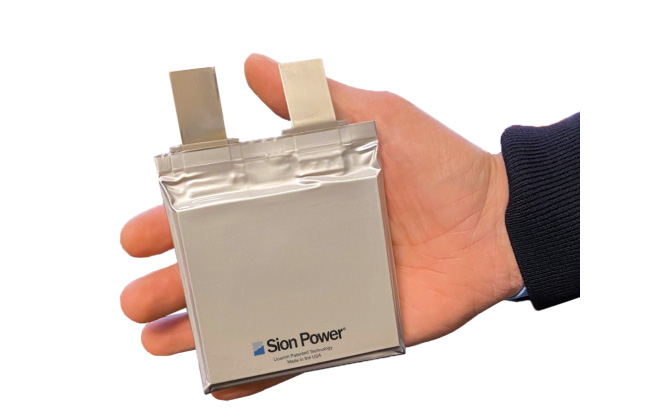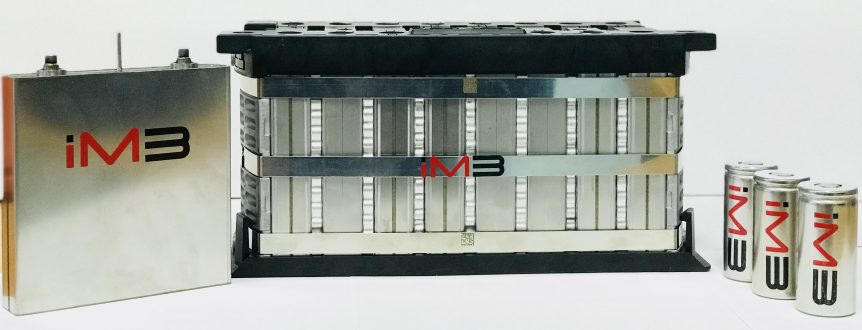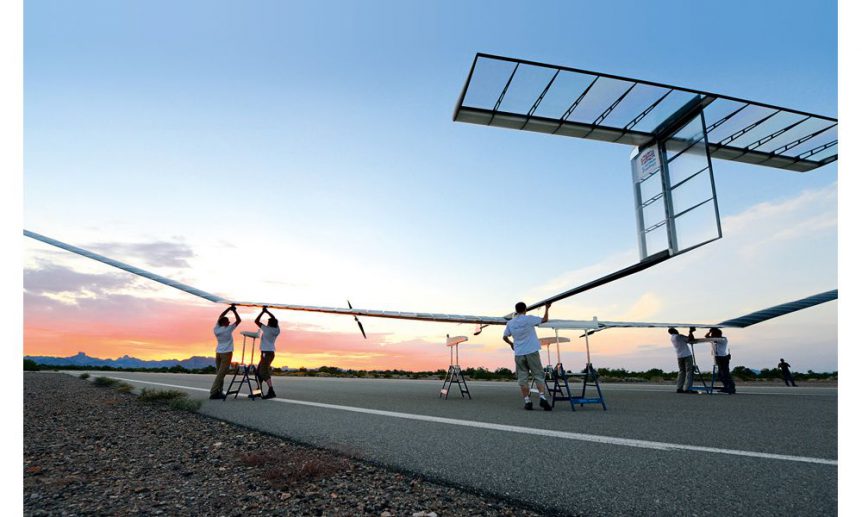A battery with 560 Watt-hours per kilogram, a stable long life, and no fires. What’s not to like? Researchers at Helmholtz Institute Ulm (HIU), founded by the Karlsruhe Institute of Technology (KIT) in cooperation with the University of Ulm, have come up with a dual anion, nickel-rich cathode, lithium-metal battery that, although in early stages of development, may point a way forward. Academic journal Joule reports, “High-energy batteries, in particular lithium batteries, are the key to achieve carbon-neutral mobility…. However, it is foreseen that a fully electrified mobility and transportation can only be achieved by the development of batteries employing lithium metal as the negative electrode (anode) while still granting long-term cycling performance and safety.” Safety may be the deciding factor here, especially in electric aircraft. Coupling the lithium metal anode with a nickel rich cathode seems to pay off for the researchers. Along with the dual anion liquid electrolytes, they’ve managed to keep things stable and performing well. Considering …
Oxis Battery Lost, Other Batteries Found?
Announcing pending bankruptcy last week, Oxis Energy surprised those of us who did not see the impending problem. One major supporter of Oxis is George Bye, because his eFlyer line of aircraft were all slated to fly on their power. Contacted through company Vice President Diane Simard, Bye issued the following statement: “Bye Aerospace’s eFlyer 800 program remains on track,” said George E. Bye, CEO of Bye Aerospace. “We continue to support Oxis Energy, their lithium-sulfur cell technology, leadership, team and owners. These types of transitions occur in every industry.” Other batteries may wait in the wings, so to speak. Oxis prefaced its web site with the following announcement: “OXIS Energy Limited is in administration. Simon Girling and Christopher Marsden were appointed Joint Administrators of the Company on 19 May 2021. Simon Girling is authorized to act in the UK as an Insolvency Practitioners by the Insolvency Practitioners Association. Christopher Marsden is authorized to act in the UK as an …
The C4V Battery – Solid-State in Production?
Jeffrey Engler of Wright Electric posted an item about Charge CCCV, LLC (C4V) which “demonstrated a prototype of its new Solid State Battery (SSB) at the NY BEST 2018 Fall Conference in New York. The Company’s SSB solution delivers higher performance, higher density, lower cost batteries that promise to require significantly less charging time than others.” The startup announced a 380 Watt-hour-per-kilogram battery already in production. Since your editor tends to become a bit snarky about the usual two-to-five-year period of anticipation before these numbers become reality, he rushed to check out the claims. Plausible Numbers, but Uncertain Time Frame The firm’s numbers are not wildly excessive, and they seem to be getting funding and finding partnerships with established companies. The video is not great proof of anything other than that a metal box with the company’s logo exists. Their web site gives credibility to their ability to produce actual batteries. According to C4V, “Approximately 80% of the cost to …
Airbus, Williams Team to Expand Zephyr Program
What’s the HAPS, Guys? Airbus and Williams Advanced Engineering, two heavy hitters with the world’s largest commercial airliner and the world’s fastest formula electric cars, are collaborating on making a light, slow airplane stay up indefinitely. Their memorandum of understanding (MOU) seeks to integrate Williams’ demonstrated abilities with “ultra-lightweight materials, battery technologies and electrical cell chemistries… in… Airbus’ Zephyr High Altitude Pseudo-Satellite (HAPS) program.” Airbus Defense and Space has worked with Sion Power Corporation since 2015 to use Sion’s proprietary lithium-Sulfur (Li-S) batteries for use in Airbus’ Zephyr aircraft. The current Zephyr S is the latest iteration of a series of solar-powered, unmanned aerial systems (UAS) that will fly at 65,000 feet for months at a time. High Over Dubai Airbus and Sion have expanded the Zephyr S’ performance envelope to accomplish a 336-hour flight in 2010, and a climb to 61,696 ft (18,805 meter) over the United Arab Emirates in 2014. Airbus compares the ability of Zephyr to that …
Sion Power, Airbus, UAE Team Up to Set Dubai Altitude Record
First, let’s get the new acronym out of the way. The solar-powered flyer recently setting records in Dubai is part of the Airbus High Altitude Pseudo-Satellite (HAPS) program. One headline led off with “What’s the HAPS?” leaving your editor saddened by not having thought of it first. Such craft were previously referred to as HALEs (High Altitude Long Endurance) platforms. It’s also part of the Emirates Institution for Advanced Science and Technology (EIAST), a kind of Middle-Eastern STEM program promoting technological advancement and sustainable development in Dubai and the United Arab Emirates (UAE). The airplane set three world records in 2010, flying over the desert Southwest in America as part of Qinetiq’s development program. It managed 336 hours 22 minutes and 8 seconds then, but has added a record 61,696 feet altitude to its accomplishments during a 23 hour, 47 minute flight over Dubai, the highest flight so far in the UAE. Gizmag noted the flight was the first time …
Lithium Sulfur Batteries – Energy Storage at New Heights
Last year, Oak Ridge National Laboratory (ORNL) announced that researchers had “successfully demonstrated that lithium-sulfur battery technology can indeed outdo lithium-ion on several fronts.” Theoretically, lithium-sulfur batteries could be four times as energy dense as today’s lithium-ion batteries, but that promise had yet to be demonstrated. ORNL took initial steps toward that goal, and within the last few months researchers at Vanderbilt University have shown a strong lead in forming lithium-sulfur batteries with commercial potential. Echoing work done at Sakti3, ORNL researchers demonstrated an all-solid-state lithium-sulfur cell, addressing flammability issues shared by batteries with solid electrolytes. Using lithium polysulfidophosphates (LPSPs) in the cathode, and which have ionic conductivities eight times higher than that of lithium sulfide (Li2S) the team coupled that with a lithium anode to create “an energy-dense, all solid battery.” Energy density was a noteworthy 1,200 mili-Amp-hours per gram, about 7 to 8.5 times that of conventional lithium batteries. A number of blogs repeated the slightly overheated lines …
Battery Prices and Lithium Futures
EV World has a weekly email update to which your editor subscribes. Because they provide a collection of articles and opinions from different sources, one often comes away questioning trends and even facts – or sometimes the meaning of it all. This week, an article referenced from Green Car Reports says that EV batteries may already have fallen to $250 per kilowatt hour. This would be a godsend for sales of battery-powered cars, because sticker prices would drop sharply. The article quotes Wolfgang Bernhart, a partner at Rolan Berger Strategy Consultants, that battery prices are already much lower than previous predictions would have indicated, possibly as low as $250 per kilowatt hour. His analysis credited economies of scale for this drop, which is based on 2015 demand. This paradoxical approach notes that battery manufacturers must begin planning production now for 2015 EVs, with prices quoted to those manufacturers based on that future demand. Such prices would be an optimistic five …




